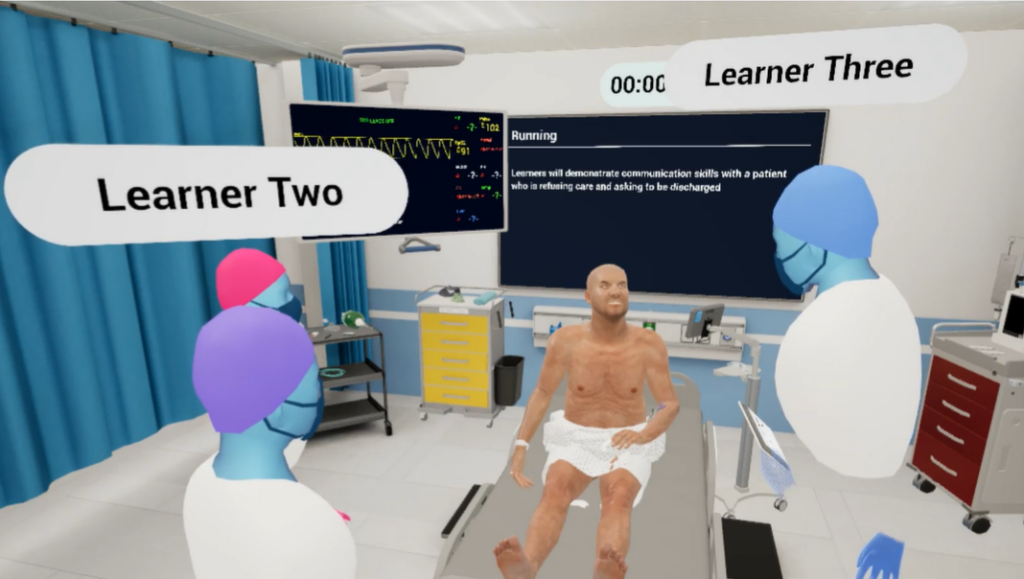
From Manikins to AI: How the University of Missouri is Transforming Emergency Medicine Training with InvolveXR
When Dr. Tim Koboldt, Simulation Director and Associate Professor of Emergency Medicine at the University of Missouri, first started exploring virtual reality for clinical training, it meant messy cables, bulky hardware, and a whole lot of trial and error. Today, thanks to platforms like InvolveXR, he’s leading one of the most forward-thinking simulation programs in the country, powered by AI and purpose-built to meet the real-world demands of emergency medicine.
Bringing VR into the Simulation Lab
Each month, Dr. Koboldt’s EM residents rotate through four simulation stations. Historically, the fourth station, designed for debriefs or case reviews, wasn’t anyone’s favorite. But instead of scrapping it, Dr. Koboldt reimagined it. With a bit of creativity and a room with no equipment, he turned it into a fully VR-based simulation experience using InvolveXR.
The result? A fully instructor-led, AI-enhanced simulation station that adapts to learners on the fly, just like real-world clinical care demands.
Customization That Mirrors the Real World

This level of customization proved critical when designing nuanced cases like an ectopic pregnancy scenario focused on shared decision-making. With AI-driven patient dialogue, learners were challenged to think critically, build rapport, and communicate options in a high-stakes, emotionally charged moment.
Making Simulation Work in the Real World
While others have emphasized the potential of self-directed learning, Dr. Koboldt sees the greatest value in instructor-led sessions, where educators can adapt in real time and guide learners through complex clinical scenarios. “AI can assist,” he noted, “but it should never replace the educator, especially when clinical nuance matters.”

At the same time, his team is piloting a “flipped classroom” approach using InvolveXR, not just to practice, but to build. Learners are given a prompt or diagnosis, then tasked with creating a simulation case around it in InvolveXR. In doing so, they must think critically about patient presentation, potential pathways, decision points, and desired outcomes, taking on the perspective of both educator and clinician.
This method turns case-building into a learning tool itself, reinforcing clinical reasoning and deepening engagement with the material. Dr. Koboldt’s team plans to expand this model internally and has proposed it as a live workshop at an upcoming simulation conference.
Real Results, Real Impact
Dr. Koboldt’s innovative approach at the University of Missouri shows what’s possible when immersive technology meets real clinical expertise. By integrating InvolveXR into his emergency medicine curriculum, he’s created a flexible, high-impact training environment that’s engaging, customizable, and truly reflective of real-world practice.
Ready to Reimagine Your Simulation Program?
Want to see how InvolveXR can fit into your program?
Book a demo today to learn more.